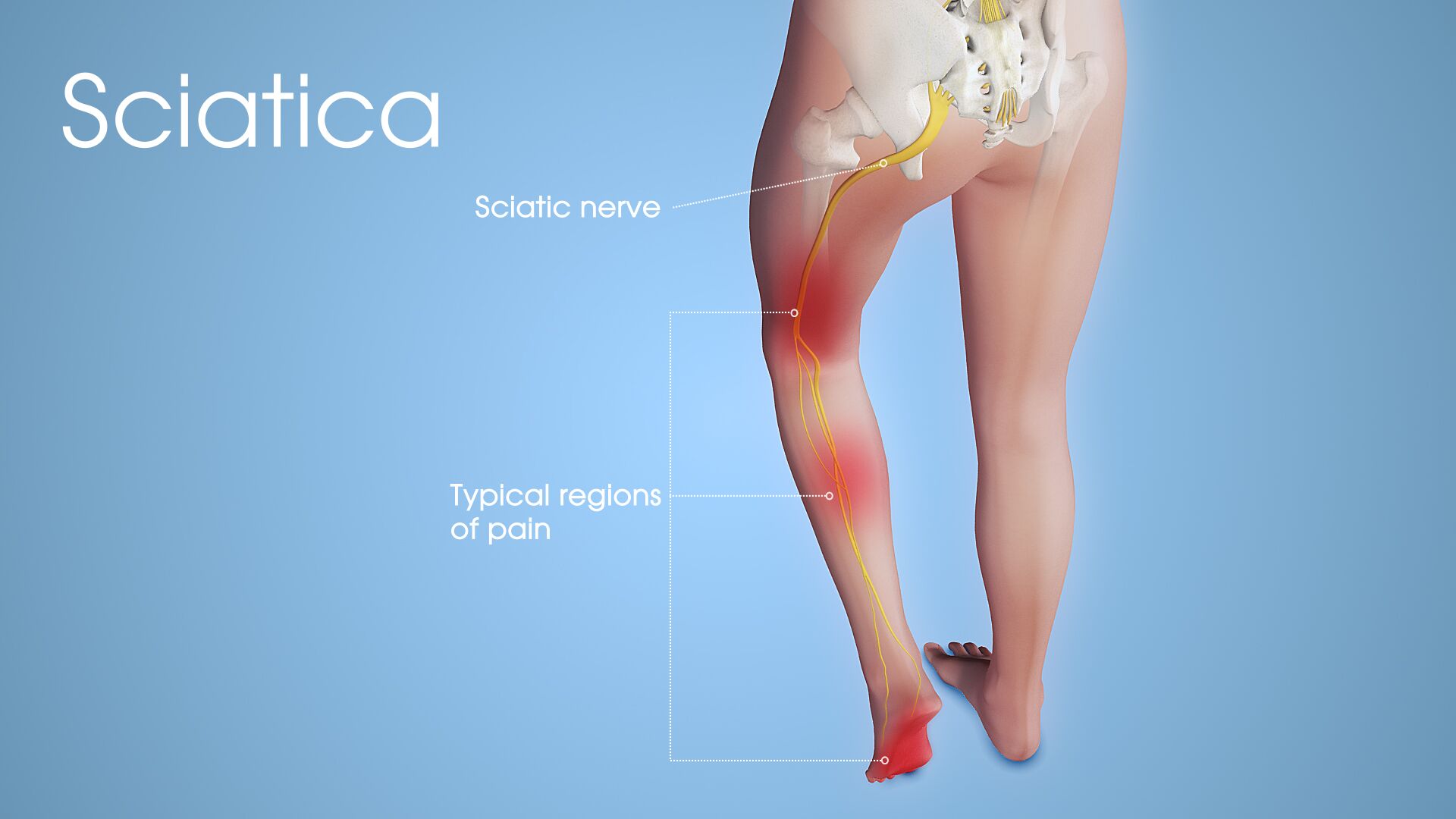Sciatica happens as a result of irritation of the sciatic nerve (the largest nerve in the body) beginning in the lower back and extending down to the lower limb. Sciatica is often characterized by pain in buttock or leg (usually only on one side), especially when sitting, and numbness of foot and toes causing difficulty in movement.
Sciatica is common at the age of 40-50 and is most likely to affect men. Treatment depends on its underlying cause and the severity of pain.

Causes and Pathophysiology
Sciatica is generally caused by the compression of lumbar or sacral nerves of the spinal cord, or by compression of the sciatic nerve itself.
The spinal discs are composed of a tough cartilaginous ring with a malleable center (called a nucleus pulposus). The discs ensure there is enough room between the vertebrae for the nerve roots to properly exit. They also cushion the spine from compressive forces, but cannot handle the pressure applied during rotational movements.
- About 90% of the time, sciatica is due to spinal disc herniation pressing on one of the lumbar or sacral nerve roots. Liquid from the nucleus pulposus, tears the fibrous rings and extrudes into the spinal canal, causing inflammation that further compresses a nerve root against the vertebra.
- Spinal stenosis or the narrowing of the spinal canal due to compression of the spinal cord could be another reason for sciatica pain. Stenosis could be due to inflammation, tumor, bone spurring, etc.
- Sciatica may also occur during pregnancy as a result of the weight of the fetus pressing on the sciatic nerve.
- Sciatica (up to 8% cases) rarely arises from Piriformis syndrome in which the shortening of piriformis muscle exerts pressure on the sciatic nerve.
Disc herniation, back sprain, shingles, and degenerative lumbar spine can all cause temporary forms of sciatica, lasting from days to weeks. However, sometimes, degeneration of the lumbar spine and discs leads to chronic sciatica that persists unless a surgical intervention is performed.
Management and Treatment
Major remedies to cure sciatica pain include topical administration of heat and cold pack, light stretching exercises of the lower back and over-the-counter pain relievers, muscle relaxants, anti-inflammatories, and sometimes even antidepressants to help reduce pain perception in the brain.
Cortisone medications, given orally or by epidural injection, can sometimes be helpful in relieving sciatica.
Surgical procedures are opted for in case of chronic sciatica when there is unbearable, persisting pain caused by nerve compression at the lower spine.
- Microdiscectomy is a minor open surgery done to relieve sciatica pain caused by lumbar disc herniation. The portion of the herniated disc that is pinching the nerve is removed, leaving the rest of the disc intact.
- In severe cases when sciatica pain is due to lumbar spinal stenosis, a lumbar laminectomy may be recommended that removes the portion of the bone and/or disc material that is pinching the nerve root.
Sciatica is not a medical diagnosis in itself, but a symptom of a more serious underlying medical condition which could be a lumbar herniated disc, degenerative disc disease, spondylolisthesis, or spinal stenosis.
Understanding Bone Cementing and its use in treating Spinal Injuries
Bone cementing is employed as a non-surgical treatment option for spinal injuries and femoral fractures.. Read More..
“Digital Disabilities” are on the rise. Are you a victim too?
For every inch you drop your head forward, you double the load on your shoulder muscles and cervical spine. Read More..








